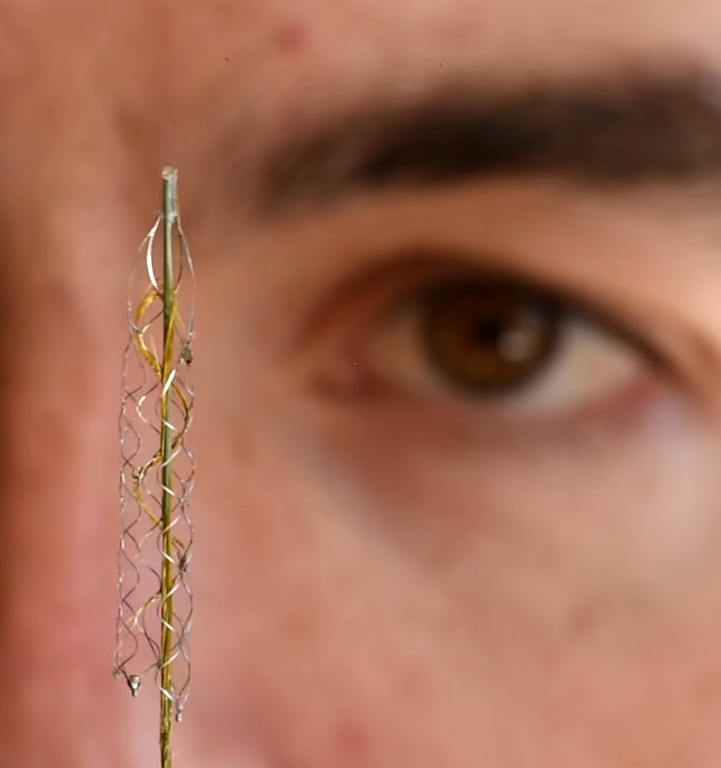Mind-control implant lands in Melbourne
 Australian researchers have unveiled a stunning new device that could change the world for paraplegics.
Australian researchers have unveiled a stunning new device that could change the world for paraplegics.
High-tech engineers developed what is essentially a bionic spinal cord, which can transmit thoughts wirelessly to devices such as advanced prosthetics and robot exoskeletons.
The brain/machine interface consists of an electrode the size of a small paperclip implanted within a blood vessel next to the brain. The implant runs along the inside walls of the blood vessel, allowing blood flow to be maintained.
The electrode (in this case, a ‘stentrode’) records the type of neural activity that can move and exoskeleton or control bionic limbs.
The stentrode concept is similar to an implantable cardiac pacemaker – electrical interaction with tissue using sensors inserted into a vein, but inside the brain.
The new device will be implanted in a human for a world-first trial at The Royal Melbourne Hospital in 2017.
“We have been able to create the world’s only minimally invasive device that is implanted into a blood vessel in the brain via a simple day procedure, avoiding the need for high risk open brain surgery,” says research engineer Dr Thomas Oxley.
“Our vision, through this device, is to return function and mobility to patients with complete paralysis by recording brain activity and converting the acquired signals into electrical commands, which in turn would lead to movement of the limbs through a mobility assist device like an exoskeleton. In essence this a bionic spinal cord.”
More details are available in the full report, and in the video below.
The ground-breaking device is the result of collaboration by The Royal Melbourne Hospital, The University of Melbourne and the Florey Institute of Neuroscience and Mental Health, as well as major funding partners, US Defense Department DARPA and Australia’s National Health and Medical Research Council.
There was also support from the Office of Naval Research Global USA, The Australian Defence Health Foundation, The Brain Foundation and The Royal Melbourne Hospital Neuroscience Foundation.
View post on imgur.com







 Print
Print